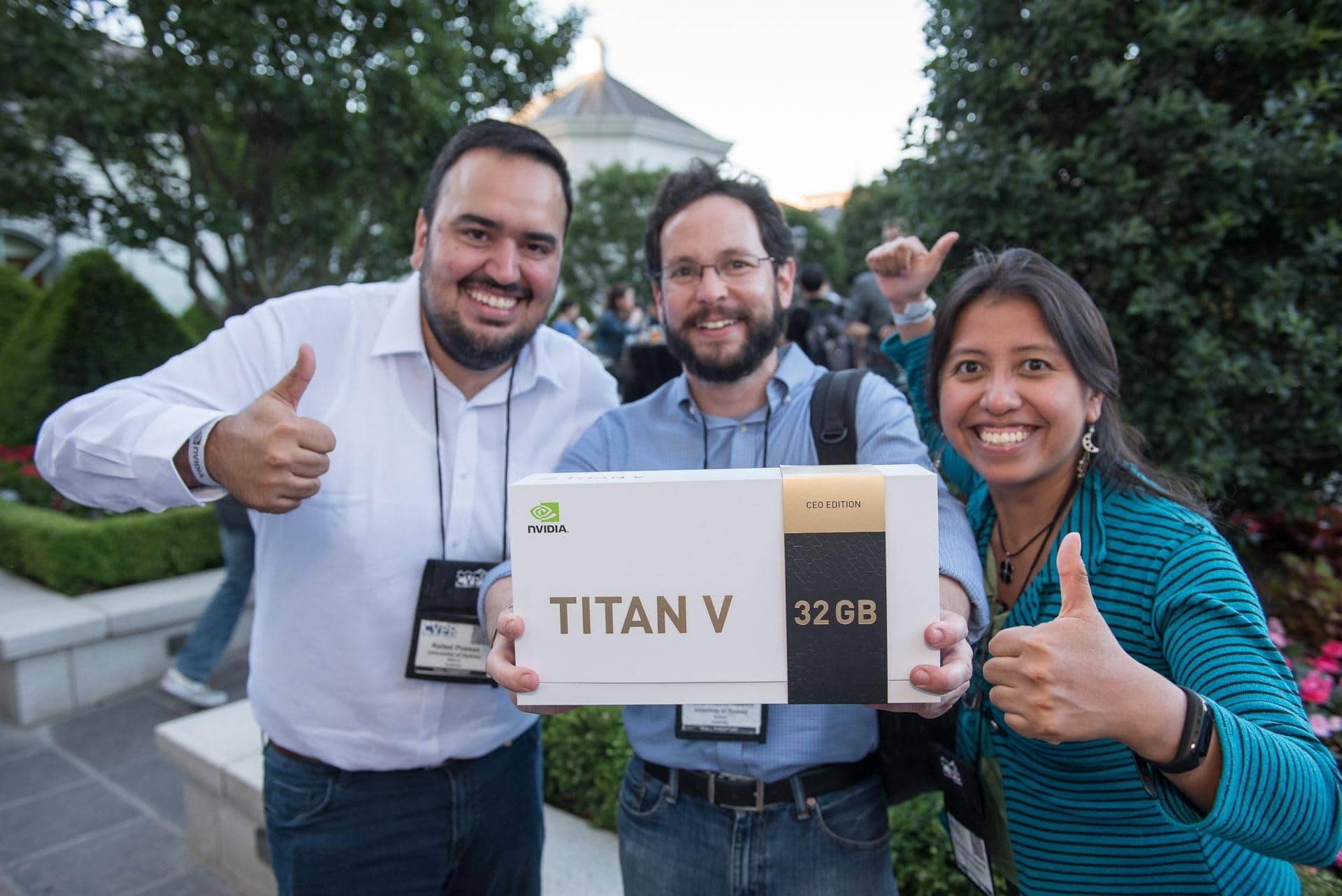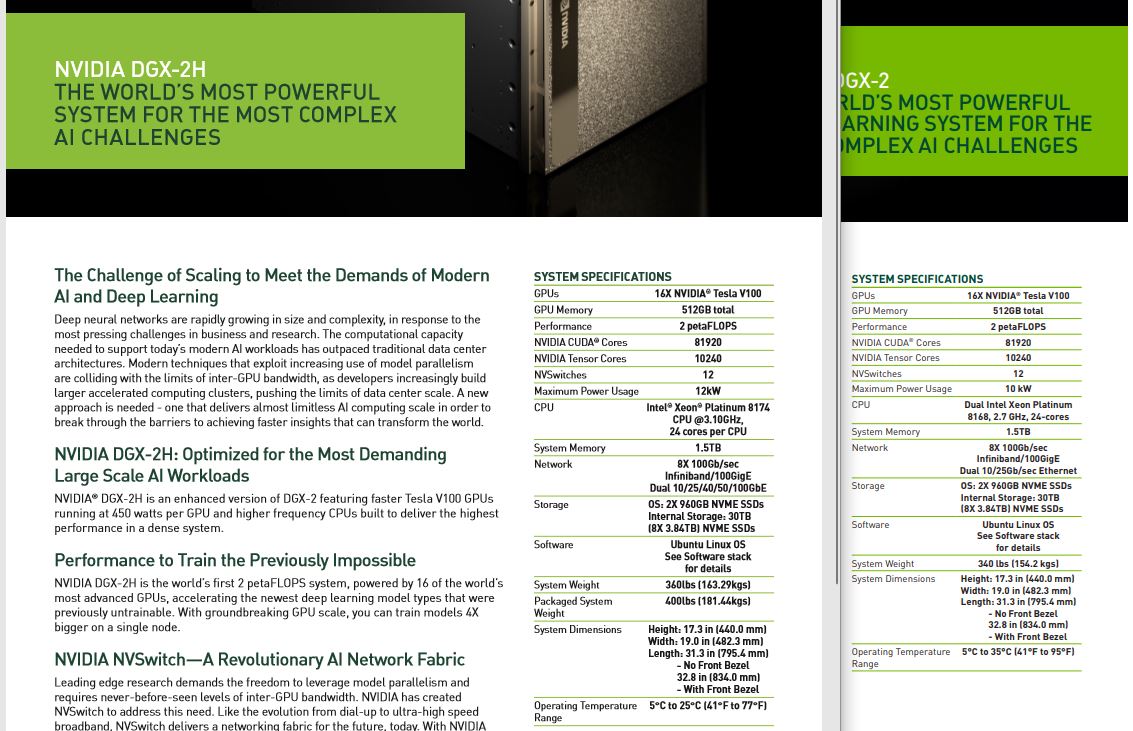Benetanegia
Regular
I can only think of it meaning:
Power of sram + sys ram > Power of sys ram
Power of sram + sys ram > Power of sys ram
Follow along with the video below to see how to install our site as a web app on your home screen.
Note: This feature may not be available in some browsers.
I guess, but energy is what matters, and you're going to use much less of it while fetching something from an SRAM cache than from off-chip DRAM in all cases that I know of.
Were the previous records all on double precision?"ORNL scientists were among the scientific teams that achieved the first gigaflops calculations in 1988, the first teraflops calculations in 1998, the first petaflops calculations in 2008 and now the first exaops calculations in 2018."
I sense... a pattern (although I am pretty sure first gigaflop system went up in 1985).

https://www.top500.org/news/new-gpu...rs-change-the-balance-of-power-on-the-top500/In the latest TOP500 rankings announced this week, 56 percent of the additional flops were a result of NVIDIA Tesla GPUs running in new supercomputers – that according to the Nvidians, who enjoy keeping track of such things. In this case, most of those additional flops came from three top systems new to the list: Summit, Sierra, and the AI Bridging Cloud Infrastructure (ABCI).
Summit, the new TOP500 champ, pushed the previous number one system, the 93-petaflop Sunway TaihuLight, into second place with a Linpack score of 122.3 petaflops. Summit is powered by IBM servers, each one equipped with two Power9 CPUs and six V100 GPUs. According to NVIDIA, 95 percent of the Summit’s peak performance (187.7 petaflops) is derived from the system’s 27,686 GPUs.
...
As dramatic as that 56 percent number is for new TOP500 flops, the reality is probably even more impressive. According to Ian Buck, vice president of NVIDIA's Accelerated Computing business unit, more than half the Tesla GPUs they sell into the HPC/AI/data analytics space are bought by customers who never submit their systems for TOP500 consideration. Although many of these GPU-accelerated machines would qualify for a spot on the list, these particular customers either don’t care about all the TOP500 fanfare or would rather not advertise their hardware-buying habits to their competitors.
...
While company’s like Intel, Google, Fujitsu, Wave Computing, Graphcore, and others are developing specialized deep learning accelerators for the datacenter, NVIDIA is sticking with an integrated AI-HPC design for its Tesla GPU line. And this certainly seems to be paying off, given the growing trend of using artificial intelligence to accelerate traditional HPC applications. Although the percentage of users integrating HPC and AI is still relatively small, this mixed-workflow model is slowly being extended to nearly every science and engineering domain, from weather forecasting and financial analytics, to genomics and oil & gas exploration.
...
And, thanks in large part to these deep-learning-enhanced V100 GPUs, mixed-workload machines are now popping up on a fairly regular basis. For example, although Summit was originally going to be just another humongous supercomputer, it is now being groomed as a platform for cutting-edge AI as well. By contrast, the ABCI system was conceived from the beginning as an AI-capable supercomputer that would serve users running both traditional simulations and analytics, as well as deep learning workloads. Earlier this month, the MareNostrum supercomputer added three racks of Power9/V100 nodes, paving the way for serious deep learning work to commence at the Barcelona Supercomputing Centre. And even the addition of just 12 V100 GPUs to the Nimbus cloud service at the Pawsey Supercomputing Centre was enough to claim that AI would now be fair game on the Aussie system.
https://www.anandtech.com/show/12673/titan-v-deep-learning-deep-diveThe most eye-catching of Volta’s new features are the new specialized processing blocks – tensor cores – but as we will see, this is very much integrated with the rest of Volta's microarchitectural improvements and surrounding software/framework support for deep learning (DL) and high performance compute (HPC). Matching up with the NVIDIA Titan V are the Titan Xp and GeForce GTX Titan X (Maxwell), with the AMD Radeon RX Vega 64 also present for some tests.

The number of SPs is still the same so the new 450 W V100 appears to have a clock speed of ~1.6 GHz.Patrick Kennedy (ServeTheHome) said:We reached out to NVIDIA regarding the 2 petaflop number. NVIDIA said that it should be 2.1 petaflops and will be updated accordingly.
So that one is SXM4 then? SXM3 was 350w, SXM2 is 300w (the NVLink version) and SXM1 is 250w (the PCI-E version).The number of SPs is still the same so the new 450 W V100 appears to have a clock speed of ~1.6 GHz.
Impressive! Just one DGX-2H will place you about # 62 in the TOP 500 list.
I was surprised when I heard Brookhaven National Laboratory was getting one but now it makes sense.
http://www.lab3.kuis.kyoto-u.ac.jp/arith26/slides/session5/5-5.pdf
Why would they change it when it was apparently good enough for a high end HPC focused GPU and Turing is far more consumer oriented? We know that the Tensors are different in Turing?Good stuff, probably goes along with being a first gen tensor core product and would expect some change in later products. I'd like to see the results of a reverse engineered Turing since the tensor cores are different, and for next year's Ampere product.
